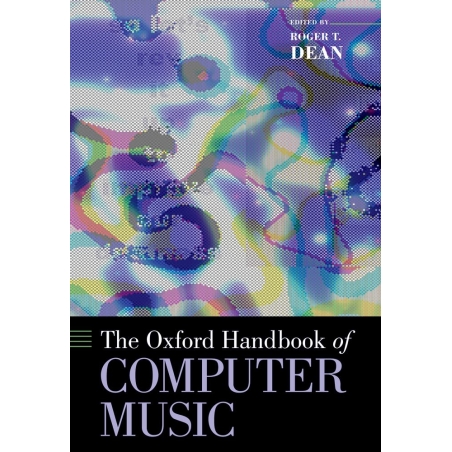The Oxford Handbook of Computer Music provides a state-of-the-art cross-section of the most field-defining topics and debates in the field of computer music today. From music cognition to pedagogy to sociocultural analyses, this Handbook situates computer music in the broad context of its creation and performance across the full range of issues that crop up in contemporary discourse in the field.
CONTENTS
1. Introduction: The many futures of computer music
Roger T. Dean
Section I: Some histories of computer music and its technologies
2. A historical view of computer music technology
Douglas Keislar
3. Early hardware and early ideas in computer music - their development and their current forms
Paul Doornbusch
4. Sound synthesis using computers
Peter Manning
Section II: The Music
5. Computational approaches to composition of notated instrumental music: Xenakis and the other pioneers
James Harley
6. Envisaging improvisation in future computer music
Roger T. Dean
Section III: Sounding Out
7. Computer music: some reflections
Trevor Wishart
8. Some notes on my electronic improvisation practice
Tim Perkis
9 Combining the acoustic and the digital: music for instruments and computers or pre-recorded sound
Simon Emmerson
Section IV: Creative and Performance Modes
10. Dancing the music: interactive dance and music
Wayne Siegel
11. Gesture and morphology in laptop music performance
Garth Paine
12. Sensor based musical Instruments and interactive music
Atau Tanaka
13. Spatialisation and computer music
Peter Lennox
14. The voice in computer music and its relationship to place, identity and community
Hazel Smith
15. Algorithmic synaesthesia
Noam Sagiv, Freya Bailes and Roger T. Dean
16 An introduction to data sonification
David Worrall
17. Electronica
Nick Collins
18. Generative algorithms for making music: emergence, evolution and ecosystems
Jon McCormack, Alice Eldridge, Alan Dorin and Peter McIlwain
Section V: Cognition and Computation of Computer Music
19 Computational modelling of music cognition and musical creativity
Geraint A. Wiggins, Marcus T. Pearce and Daniel Mullensiefen
20. Soundspotting: a new kind of process?
Michael Casey
Section VI: Sounding Out
21. Interactivity and improvisation
George E. Lewis
22. From outside the window: electronic sound performance
Pauline Oliveros
23. Empirical studies of computer sound
Freya Bailes and Roger T. Dean
Section VII: Cultural and Educational Issues
24. Toward the gender ideal
Mary Simoni
24. Sound-based music 4 all
Leigh Landy
25 Framing learning perspectives in computer music education
Joran Rudi and Palmyre Pierroux
Appendix
A chronology of computer music and related events
Paul Doornbusch
Contributors
Index




